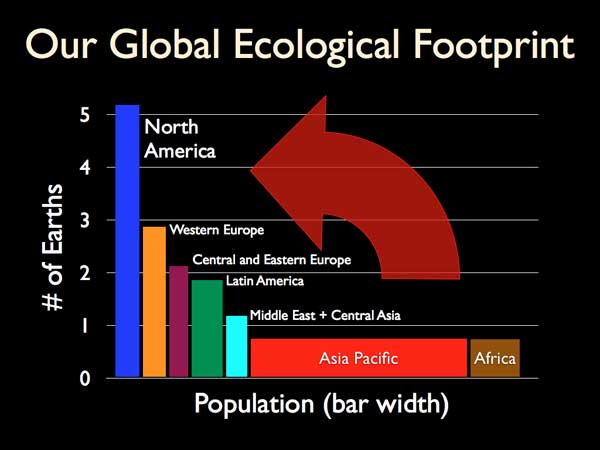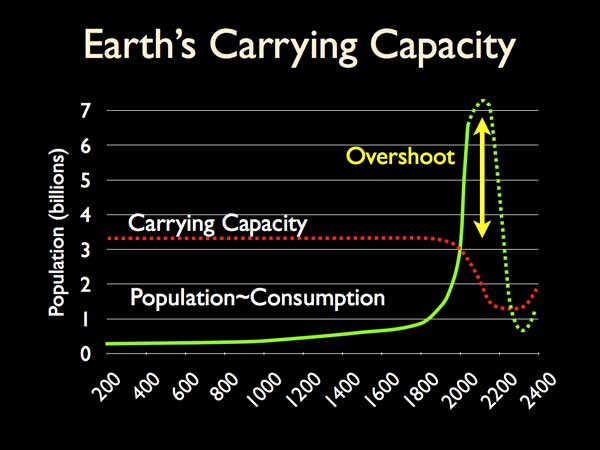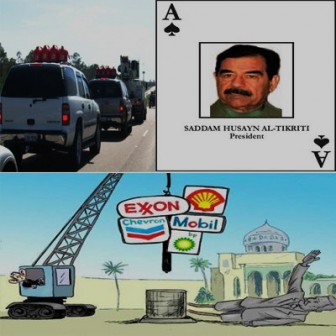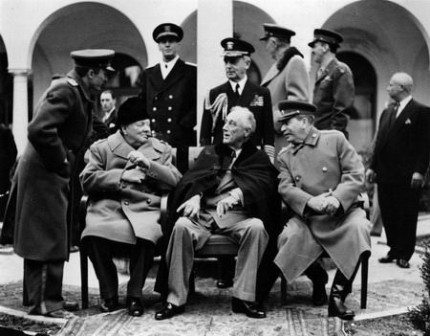Mention fascism and most peoples' minds turn to Nazi Germany, Fascist Italy, Franco's Spain , Salazar's Portugal , Japanese Fascism, Papadopoulos' Greece and South Africa 's Apartheid regime. However, most people are blissfully unaware of a rising form of fascism, more virulent than all past fascist regimes combined. Its aim is to subjugate the entire planet and its resources to U.S. corporate interests.
It is true that German Fascism was evil; but it is also true that its evilness has been exploited, even exaggerated, by one powerful Zionist entity and its supporters to justify the persecution and dispossession of the Palestinian people. German Fascism has diversified and mutated into super fascism supported by regimes claiming to be ?liberal democracies?.
The word Fascism originated from the Latin ?Fasces', means a bundle of sticks tied together to represent the ruling élite. At the heart of fascist ideology are corporatism, militarism, nationalism, racism and total control of citizens. Fascism is ?a political system or regime with a tendency toward or actual exercise of Fascism? [Webster's Dictionary]. Unfortunately, many opportunists and apologists for Israel-U.S. crimes use the word fascism as a name-calling, carelessly throwing it around to demonise others in order to mislead the public.
In his 2003 essay Fascism Anyone ? , the British writer Laurence W. Britt identifies fourteen characteristics of fascism common to past fascist regimes. Are they common and shared by regimes today? The purpose of this essay is to seriously inform people of the growing danger of fascism today, using the fourteen characteristics as a matchup.
1. Powerful and continuing expressions of nationalism . Fascism is deeply rooted in a profound form of nationalism based on an illusion of race superiority, ?white supremacy?. The Patriotic Act, ?Anti-terrorism? laws, flag-waving, promotion of militarism and mass recitation of the ?Pledge of Allegiance? to promote war are common characteristics of xenophobic nationalism in the U.S. , Israel , Europe and Australia . The American historian Howard Zinn writes: ?Is not nationalism ? that devotion to a flag, an anthem, a boundary so fierce it engenders mass murder ? one of the great evils of our time, along with racism, along with religious hatred? These ways of thinking, cultivated, nurtured, indoctrinated from childhood on, have been useful to those in power and deadly for those out of power?. Negative nationalism, including ?patriotism?, is the greatest danger to civilisation.
In Europe , nationalism ? which once plunged Europeans into protracted and barbaric wars ? is on the rise and it is threatening the survival of the European Union itself. It is a deadly virus spreading like fire throughout Europe , while the U.S. looks on happily. As nationalism spreads, the fate of minorities is at the mercy of racist and populist sentiments.
2. Disdain for the importance of human rights . Human rights are nothing more than a pretext to enforce Western domination on the rest of the world. The U.S. , Israel and Britain see human rights as an obstacle to their expansionist ideology and no countries in the world are more in contempt of international human rights law than the U.S. , Israel and Britain . The U.S. and Israel , in particular, are serial violators of human rights law. When European and U.S. politicians visited the Gaza Concentration Camp in Israel-occupied Palestine , the only prisoner they expressed concern about is an Israeli POW who has been accorded all his human rights under the Geneva Conventions by his Palestinian captors. They totally ignored some 11,000 Palestinian prisoners, many of them women and children, who are subjected to gross human rights violations, including torture by the Israeli Gestapo. ?Through clever use of propaganda by marginalizing and demonizing those being targeted, the population was brought to accept human rights violations, including torture and sexual abuses. When the abuses were egregious, the tactic was to use secrecy, denial, and disinformation?, writes Laurence. Human rights abuses, including torture, are part of America 's violent history. The U.S. aggression against Iraq and Afghanistan exposed America 's dark history of torture and flagrant abuses of human rights.
Prisoners of war and detainees (many without charges) were incarcerated, abused and tortured in global gulags and concentration camps around the world. From Guantánamo Bay Camp in Cuba to Afghanistan to Iraq and to countless ?black sites? prisons, innocent men, women and children have been subjected to injustice, human rights abuses and torture. In Iraq , there are hundreds of known and secret concentration camps and prisons, where innocent Iraqi civilians are being detained under deplorable conditions without being charged with any crime. Tens of thousands have been detained for years and an equal number have disappeared, possibly unlawfully executed. There are no charges, no due process and no justice. The situation in U.S.-NATO-occupied Afghanistan is even worse than in Iraq . Both nations were illegally invaded and have endured oppression, human rights abuses, injustice, torture, rape, and looting. One wonders why the Noble Prize Committee has no concern for Muslim prisoners' welfare.
It is well documented that the justice system in the U.S. is a travesty of justice. Guantánamo Bay Camp is considered ?outside U.S. legal jurisdiction? despite it is located on a U.S. Navy base in Cuba . This flawed argument is designed to deny justice to illegally detained men in flagrant violation of the Geneva Conventions and international human rights law. The Camp has become as notorious as Abu Ghraib in Iraq and Bagram Base in Afghanistan . Prisoners, including male children, are denied their human rights, abused and tortured, and some have been executed. Many have been destroyed mentally, although they have committed no crimes. For example, Omar Khadr, an Afghan-Canadian (child soldier) prisoner of war in Guantánamo Bay Camp since he was 15 years old is a case of naked hypocrisy. Khadr was tortured and coerced (forced to sign a confession) into a plea-bargain and sentenced to 40 years in prison for allegedly killing a U.S. soldier on the battlefield while defending his country against an illegal foreign invasion, while U.S. and Western leader who committed heinous war crimes remain free and unindicted.
3. Identification of enemies/scapegoats as a unifying cause . The most common characteristic of fascism is scapegoating of people from minorities. Even before 9/11, Muslims were identified as enemies, accused of ?taking-over' Europe . The event of 9/11 was an opportunity to justify attacking the scapegoats, Islam and Muslims. In Europe and many parts of the U.S. , Canada and Australia , Muslims are often unfairly depicted as terrorists, anti-women and violent in order to justify racism and injustices. False flag terrorist acts orchestrated by Western governments to justify gross injustice and stir up xenophobic fear against Muslims.
Most importantly, the rise of Islamophobia in the U.S. and Europe is fuelling the war on Islam and Muslim nations. In all these countries the population is fed (by the media) a daily diet of racism to improve their support for an aggressive war being waged by the U.S. and its allies against Islam and Muslims. In Australia , anti-Muslim hatred and bigotry have infected every Australian institution. Racial profiling of Muslims has become a cancerous disease speeding rabidly into Australian government agencies, universities and even schools.
In the U.S. , the war on Muslims is worsening and provides ammunition to America 's war on Islamic nations abroad. Islamophobia has become a fully-fledged Zionist industry that promotes fear of Muslims as part of the U.S. war. The enemies of Israel are the enemies of the ruling élite. ?Much of this bigotry and misinformation can be traced directly to what I am calling the infrastructure of hate, an industry which connects venomous anti-Islamic blogs, wealthy [Jewish] donors, powerful think tanks, and influential media commentators, journalists, and politicians?, writes Frankie Martin, the Ibn Khaldun Chair Research Fellow at American University's School of International Service in Washington DC ( Washington Post , 27 October 2010).
Europe has become a bastion of Islamophobia. Clones of Adolf Hitler are sprouting like wild mushrooms all over Europe . Their fascist policies have become part of Europe 's mainstream politics. Many of these small clones have said that they are proud to be compared to Adolf Hitler. Their support is growing alarmingly in countries with an ugly history of collaboration with Nazi Germany. In the so-called ?open? and ?tolerant? societies of Austria , Belgium , Britain , Croatia , Denmark , France , Holland , Hungry, Italy , Norway , Sweden and Switzerland fascist forces are on the rise with a Zionist and militarist agenda.
4. The supremacy of the military/avid militarism . The military industrial complex is the most powerful corporate industry in the U.S. The U.S. military budget is phenomenal. It is estimated that the U.S. spent $623 billion ? not including $3 billion military aid to Israel ? on the military in 2008. U.S. military spending exceed the rest of the world's spending combined. U.S. military feeds on the largest budget and resources, even when more than fifty million Americans are in desperate need and the country is drowning in debt. Billions of U.S. tax payer dollars are spent on the military every day. As pointed out by Laurence; ?The military was seen as an expression of nationalism, and was used whenever possible to assert national goals, intimidate other nations, and increase the power and prestige of the ruling élite?. The U.S. has access to the largest stockpiles of nuclear, biological, and chemical weapons in the world. The world's most militarised society is also ruled by a wealthy Zionist and neo-fascist ruling élite that could blow up the world at any time.
In addition to this giant monster, the world largest military organisation, NATO, is under the control of US generals and remains an instrument of the U.S. militarism. ?The alliance itself is an excrescence of the U.S. military-industrial complex. For sixty years, military procurements and Pentagon contracts have been an essential source of industrial research, profits, jobs, Congressional careers, even university funding. The interplay of these varied interests converges to determine an implicit U.S. strategy of world conquest?, writes Diana Johnstone, author of Fools Crusade: Yugoslavia , NATO and Western Delusions . This offensive military ?alliance? continues to expand in dangerous direction.
Under the rubric of ?Western shared values and common interests?, the U.S. has assembled the biggest imperialist military force in history. Threatened and coerced, regimes from around the world are joining in droves with ?slavish devotion? to U.S. wars. As mentioned earlier, fascism protects corporate interests and the ruling élite. It is not difficult to argue why so many regimes are joining U.S. aggressive wars. If they cannot join the U.S war because of domestic pressure, they open their nations' door' to U.S. military. The U.S. military has more than 1,000 fortified military bases (large and small) in countries around the world. They are not only used as launch pads for aggression against other nations, but also protecting hideous and corrupt dictators in most countries where they are based. Most of these bases are installed against the wishes of the overwhelming majority of the local populations.
In an interview on 29 November 2010 , U.S. ADM. James Stavridis, NATO supreme allied commander and U.S. European Command chief, told Defense News : ?NATO is ?a wealthy alliance' with a $31 trillion collective GDP. It is a ?big and capable alliance' with 7 million troops and 3,400 ships?. It is a truly super fascist alliance. Its new concept of ?expeditionary operations? means attacking nations beyond NATO territories, knowing that there is no other nation or groups of nations that pose any serious threat to this super fascist force. The existence of this militarised and ?wealthy alliance? depends on unprovoked aggression and manufactured pretexts for war.
Naked Aggression
Militarism and aggression go hand in hand, like a parasite and its host. Nazi Germany, Fascist Japan and Apartheid South Africa were notorious examples. Today, the U.S. , Britain and Israel are leading the way. In fact, there are striking similarities between the past three regimes and the current three regimes. Naked aggression has been integrated into U.S.-Western corporate culture.
Since World War Two, the U.S. ? supported by the like of Britain , Israel Canada and Australia ? has massacred more civilians and destroyed more nations than all past fascist regimes combined. It is rightly argued that every U.S. government (including every U.S. president) since 1945, is guilty of war crimes and flagrant violation of international law . Any nation that refuses to submit to U.S.-Zionist ideology and U.S. dictate is threatened with violence. ?You're either with us or against us?, said George W. Bush. There is no neutrality, and nations' sovereignty has become obsolete.
Even a great nation like China is threatened. If China ?refuses? to submit to Western dictate, we must be prepared to use force (i.e., aggression), said Kevin Rudd, former prime minister (now foreign minister) of Australia, the U.S. ?staunch? vassal in Asia-Pacific. You might think Rudd, who claims to be an ?expert? on China , would think twice before making such an unwise statement. ?Every 10 years or so the U.S. needs to pick up some [defenceless] little country and throw it against the wall, just to show we mean business?, writes Michael Ledeen, a U.S. Zionist propagandist. Every country that has been invaded by the U.S. military was left a shattered graveyard and a humanitarian misery. The aim is to instil fear in the world's population, dominate the world and force U.S. diktat onto another people.
It is vitally important to highlight a few recent examples of U.S. aggression and flagrant violation of international law. The U.S. war on Korea (1950-1953) caused the unnecessary death of some 3 million Koreans and destroyed every city and village in North Korea (or Democratic People's Republic of Korea ). Since 1953, the DPRK has been defending itself against U.S. aggression and ongoing false propaganda. The 1953 armistice was designed to justify U.S. military presence in the region and threaten neighbouring nations.
A decade after the aggression against North Korea, the U.S. began another decade-long criminal aggression against the people of Vietnam that caused the death of more than 3 million innocent civilians, contaminating the country with biological and chemical agents, including napalm. Despite its military superiority, unlimited resources and indiscriminate violence, U.S.-imperialism was defeated by a peasant society. In 1991, the U.S. began a criminal aggression against Iraq to ?eradicate? its defeat in Vietnam and remove the so-called ? Vietnam syndrome?.
It is estimated the U.S.-Britain enforced genocidal sanctions on Iraq of 1990 caused the death of more than 2 million innocent Iraqi civilians, including the death of more than 600,000 infants under the age of five. On 15 December, 2010 , the UN Security Council ? chaired by none other than U.S. Vice-President, the Zionist Joe Biden ? voted to ?end? the sanctions on Iraq after the puppet government accepted U.S. conditions, including long-lasting colonial occupation. According to John Mueller and Karl Mueller, the brutal and inhumane sanctions against the Iraqi people have caused far more deaths over time than the combined use of nuclear, biological and chemical weapons in the two world wars (Foreign Affairs, May/June 1999). Asked whether this was worth the death of half a million children, Madeleine Albright, the former U.S. Ambassador to the UN replied: ?We think the price is worth it?. Albright is a Jew and claims to be a ?Nazi holocaust? survivor.
The genocidal sanctions were followed by the criminal 2003 U.S.-British invasion. The unprovoked aggression is the most barbaric aggression in the history of barbarism; a supreme international war crime. It was aggression against a defenceless people under a genocidal siege. Despite the suffering inflicted on the Iraqi people, the crimes were covered-up by the media. (For more on U.S. crimes in Iraq , see: Joy Gordon, Invisible War: The United States and the Iraq Sanctions , Harvard, 2010).
In 2001, the U.S. began replicating the atrocities of Vietnam in Afghanistan . Since that year, U.S. and NATO forces have occupied and terrorised the nation of Afghanistan . Thousands of Afghan civilians have been killed by indiscriminate and relentless aerial bombing and strafing, including the illegal and criminal drone attacks on Afghanistan and Pakistan that caused the death of more than 2,000 Pakistani civilians. For the people of Afghanistan , living conditions and security have deteriorated beyond belief under a new form of Western colonialism. Like all U.S. aggressions, the war on Afghanistan is a crime against humanity. It is vitally important to note that ?all the war crimes the U. S. has committed against other peoples were not planned and carried out by sadistic thugs or xenophobic right-wingers but by ordinary folks who come from solid family backgrounds, are well mannered, display elevated cultural taste, and may even be informed by good intentions. And the planners of these horrendous crimes are mostly so-called whiz kids liberal, cultured, urbane, visionary government officials and many celebrated academics from the Ivy League Schools?, writes Carl Boggs, a Professor of Social Sciences at National University in Los Angeles.
According to a report entitled Project for the New American Century authored by a gang of U.S. Zionists and neo-fascists, including Dick Cheney, Donald Rumsfeld, Paul Wolfowitz, Richard Perle and Donald Kagan, which was published 2008, the fall of Communism was an opportunity for the U.S. to rule the world militarily and establish a new worldwide empire through aggression and permanent war, using international organisations such as, the World Bank, the IMF, the WTO, the UN and the International Criminal Court (ICC) to provide cover and legitimacy for U.S. crimes, mostly committed in broad daylight.
In October 2001, then U.S. Vice-President Dick Cheney said that U.S. ?war on terror? was ?different? from other wars ?in the sense that it may never end. At least, not in our lifetime?. In other words, the U.S. is in a perpetual war of aggression against countries and people the U.S. ruling élite deemed to be counters to U.S. imperialism.
5. Rampant sexism . The ruling élite of fascist regimes tend to be male-dominated. Fascism mobilise masculine virile energy in time of war. One of the lies used to justify U.S. aggression against defenceless people is the ?liberation? of women. In fascist regimes, women are seen as less aggressive, gay-sympathisers and tend to be anti-abortion, although not all women are anti-abortion. In most U.S.-led Western societies, the political and economic establishments are still very male-dominated. Women are considered less intelligent and lack the ?ethics' of strong male leaders. Treated as second-class citizens, women play a secondary role. Violence, including sexual violence, against women is as high as U.S. skyscrapers. The current trend of using women as ?seductive? tools to win votes for a particular male-dominated party is a tragedy, not advancement in gender equality.
6. A controlled mass media. The media and the ?entertainment? industry important tasks are the coercion and indoctrination of the population from early childhood. Zionist propagandists called this the ?intelligent manipulation of the masses?. It is a formidable achievement with truly global results. Just take a look at the tens of thousands of Australians flocked to Sydney Harbour to see Oprah Winfrey.
Objectivity doesn't exist in corporate media, and ?free speech? is free if the ruling élite like it. Today's propaganda is more superior and more efficient than at any time in history of propaganda. It is a global propaganda rife with distortion, slander, cover-ups and outright lies. The main players are the U.S. government and wealthy U.S. Zionists with a complete monopoly on mainstream media. From TV channels such as, CNN, CBS, Fox News, BBC and print media like Murdoch Press and the New York Times, to Internet web sites like Google, Facebook and YouTube, all are owned by pro-Israel Zionist Jews. According to Canadian journalist, Eric Walberg, ?Google co-founder and billionaire Sergei Brin is a big supporter financially of the Hebrew Immigrant Aid Society that funds Jewish immigrants to settle in Israel? on Palestinian land. In addition, the U.S. corporate élite and wealthy U.S. Zionists have a total control on the ?entertainment? industry, including Hollywood , which plays an important role in spreading pro-U.S. Zionist propaganda.
While the rhetoric of ?free media? is prevalent in most Western countries, a culture of censorship is widespread even by the most ?independent? and ?alternative? media outlets. Journalists and reporters have to abide by and adhere to a one-sided framework that promotes U.S.-Western fascist policies. Because if they deviates from this 'doctrinal framework' or from the line of serving power, they wouldn't get their rubbish published. Propagandists and apologists (i.e., accomplices in war crimes) are rewarded and elevated to iconic status in the media in order to be perceived by the public as even-handed ?intellectuals?. Anyone who deviates from this fascist framework risks persecution and character assassination.
There are ongoing criminal attacks by Western politicians and the corporate media on WikilLeaks for daring to release a large cache of U.S. ?diplomatic? cables. U.S. politicians and commentator in the corporate media have called WikilLeaks a terrorist organisation and are calling for its co-founder, Julian Assange, to be thrown in Guantánamo Bay Camp or killed by Special Forces. A former assistant to extremist Canadian Prime Minister Stephen Harper has proposed assassination as the best way to remove Assange. The primary aim of this violent thinking is to warn and blackmail others. It is also possible that the U.S. and its allies are using WikilLeaks to justify silencing dissident media, particularly in the Internet.
While the WikilLeaks disclosure is a welcome relief, the mainstream and corporate media have selected a few cables to promote U.S. war on Iran and North Korea and to undermine the impact of the leaked information. As one of the New York Times mindless propagandists David Brooks writes: ?The Times has thus erected a series of filters between the 250,000 raw documents that WikilLeaks obtained and complete public exposure. The paper has released only a tiny percentage of the cables. Information that might endanger informants has been redacted. Specific cables have been put into context with broader reporting? ( NYT 29 November 2010 ). Where are the lies used to justify the U.S. aggression against Iraq ? Exposure of these lies will strengthen the case of war crimes against the perpetrators of the war and the deaths of more than a million innocent Iraqis. Does WikiLeaks have anything related to Israel 's serious war crimes and terrorist acts? In reality, a lot of the leaked cables are dubious in nature and benefit Israel 's fascist agenda more than undermining U.S. imperialism and threatening U.S. national security.
7. Obsession with national security . The so-called ?war on terrorism? is meaningless. First, it is a manufactured catchall phrase to label and demonise the enemy and protect the ruling élite; and second, it is a pretext to justify aggressive wars and control the population through draconian laws and repressive measures. The Washington Post ( 20 December 2010 ) reports that since 9/11 the U.S. ?is assembling a vast domestic intelligence apparatus to collect information about Americans, using the FBI, local police, state homeland security offices and military criminal investigators?. The U.S. claim that it needs the information to protect the population from acts of terrorism is ironic. The U.S. is the world's biggest exporter of terrorism and a source of instability everywhere. In the new age of ?security?, police and security guards litter the streets of Western cities and towns ready for every move. Peaceful protesters are attacked with rubber bullets, tear gas, and pepper spray. If arrested, protestors risk criminal charges and imprisonment.
In the U.S. , presidential directives allow police and security agents (CIA and FBI) to abduct, kidnap, detain indefinitely and torture people suspected of planning ?terrorism?. In February 2010, President Obama signed a one-year extension of three provisions of the Patriot Act to allow the government ?to obtain roving wiretaps over multiple communication devices, seize suspects' records without their knowledge? ( Christian Science Monitor , 01 March, 2010 ). Americans have been told to spy on their neighbours, a despicable act which was used by the Nazis.
In the current case of WikilLeaks, a number of U.S. Congressmen and journalists have called for the prosecution of Julian Assange under the 1917 Espionage Act for breaching U.S. security. This is not something out of the blue, but has been used in the past to prosecute American citizens. It is reminiscent of Nazi Germany's prosecution of people ? labelled ?traitors? ? who criticised the Nazi Party or made jokes about the F u ehrer.
In the U.S. and in Europe , communities and entire cities have been subjected to 24-hour camera surveillance ? a form of repression. Large metropolitan cities like London , New York and Chicago have become forests of surveillance cameras and by far the most camera-surveilled cities in the world. One quarter of the world's surveillance cameras are in Britain . Citizens are watched around the clock and their movements are recorded and tracked (through a series of ID cards and credit cards) as they go about their daily business. In addition, many cities in the U.S. have begun using iris scanning technology, an invasive form of identification. Fear is forcing people to make more concessions.
According to civil rights groups and privacy advocates, the growing culture of surveillance poses great threat to civil liberties and personal freedom of citizens. The aim is to have total control of society by whatever means, and force people to submit to draconian laws. Furthermore, the obsession with national security is also a corporate business that benefits the manufacturers of surveillance cameras, iris scanners and their Congressional lobbyists. Security is simply a pretext for no personal security.
8. Religion and ruling élite tied together . George W. Bush justified his criminal wars as a ?message from God?. Hence, opposing Bush's war crimes was considered an attack on God, Bush's God. The U.S. is not exceptional, most regimes (even the most unreligious) use religion to rally support for a godless ruling élite.
The U.S is one of the most religious countries in the world, almost fanatical. Successive U.S. regimes attached themselves to the state predominant religion, Christianity. Furthermore, a large segment of the American population, including more than fifty million (and growing) Evangelical Christian-fascists are religious fanatics that form the political base of the Republicans Party.
No other nation uses religion to justify war crimes than the state of Israel in Palestine . The Zionist entity is forcing the rest of the world to recognise it as a ?Jewish state?, so it can commit more crimes.
9. Power of corporations protected . Fascism is characterised by a ?corporatist approach to economics?, as in the U.S. and major Western states today. Indeed, protection of corporate power is an essential part of fascism. It is not secret, what is good for IBM and Boeing is good for the country. According to a new report by the New York Times , even the U.S. Supreme Court under Chief Justice John Roberts is increasingly defending and siding with corporate interests. The ruling élite ?have chosen to serve the narrowest possible private minority interests of transnational financial and industrial corporations?, writes Susan George of the Transnational Institute in Amsterdam . Hence, fascism is corporatism. The ruling élite writes the rules in ways to benefit the few (owners of corporations) at the expense of the majority. Although the personal life of ordinary citizens was under strict control, the ability of large corporations to operate in relative freedom was not compromised.
The ruling élite see the corporate structure as a way to not only ensure military production, but also as an additional means of social control. Members of the economic élite were often pampered by the political élite to ensure a continued mutuality of interests, especially in the repression of the ?have-not? citizens. The ruling-corporate élites are so powerful, even if a change in the White House doesn't lead to a change in policy. The Obama Administration proposal of a two-year pay freeze for all civilian federal workers while leaving Wall Street and corporate CEOs to continue making record profits and bonuses through tax cuts and bail-out is a case in point. In his recent fiscal deal with the Republicans, President Obama cut the net earnings of the lowest-paid workers and passed them to the wealthiest 1 per cent of Americans. In other words , Obama agreed to extend George W. Bush tax cut to the wealthiest Americans.
10. Power of labour suppressed or eliminated . Under fascist regimes, unions and organised labour are considered enemies of the state. In the U.S, the working-class or public workers have been decimated by successive U.S. regimes on behalf of big wealthy corporations.
In most Western countries striking union workers were attacked and organized labour was crashed by the ruling élite and its corporate allies. Former British Prime Minister Margaret Thatcher and former Australian Prime Minister, the bigoted John Howard, were vicious enemies of unions and the working-class. In Germany , France , Spain and Greece , anti-labour laws are on the rise.
One of the major reasons Western powerful corporations have relocated their export industries off-shore to China and elsewhere is to exploit the labour there and ineffective regulations in host countries. The high profit operations have destroyed organised labour at home in the U.S. , Europe , Japan and South Korea . Economic ?globalisation', a variant of U.S. imperialism, has perpetuated workers' exploitation.
Local workers (? Third World ? workers) are forced to work under criminal and inhumane conditions, and paid poverty-level wages. If they protest, they will be dealt with severely. The recent case in Chittagong , Bangladesh when police fired on striking garment workers killing four and injuring more than 150 is a case in point.
11. Disdain and suppression of intellectuals and the arts . ?Intellectuals and the inherent freedom of ideas and expression associated with them were anathema to these regimes?, writes Laurence. In fascist regimes, ignorance is encouraged while intellectualism and awareness were discouraged. Intellectuals and the arts are promoted and encouraged as far as they provide needed propaganda.
In the U.S. , the McCarthyism era was followed by different forms of repression. People who question or doubt the official story of 9/11 are demonised and depicted as anti-American ?conspirators?. The event was used as an opportunity for the U.S. government to crackdown on dissent, including students' protest and academic freedom.
Through tight control of intellectual and academic freedom, universities have turned into right-wing think tanks and racist laboratories of citizens' indoctrination. Universities have become powerful and privileged corporations that seemed far removed from the daily life of ordinary people. Academics are paid propagandists spreading falsehoods to manipulate the masses.
Terry Eagleton, who was forced to retire from his post as John Edward Taylor Professor of English Literature at Manchester University writes: ?By and large, academic institutions have shifted from being the accusers of corporate capitalism to being its accomplices. They are intellectual Tescos, churning out a commodity known as graduates rather than greengroceries?. As Laurence writes; ?Politically independent academics were harassed or eliminated. Unorthodox ideas or expressions of dissent were strongly attacked, silenced, or crushed?.
12. Obsession with crime and punishment . The U.S. is leading the world in incarceration rates and the prison industry is one of the largest ?growth? industries. The U.S. has more prisoners than anywhere on the planet. Nearly 10% of the population or one in 100 adults in the U.S. is in jail or prison. On average, one in every 20 American men is behind bars or ?being monitored?. In 2008, about 5.1 million people were on probation or parole. Most of those incarcerated are African-Americans and Latinos caught in an unjust and corrupt justice system. According to the Washington Post ( 29 February 2008 ); ?One in nine black men ages 20 to 34 is behind bars. For black women ages 35 to 39, the figure is one in 100, compared with one in 355 for white women in the same age group?.
Police power is sacrosanct and promoted to the point of encouraging abuse of people from minorities. The police were often glorified and had almost unchecked power, leading to rampant abuses. Petty crime is exaggerated and used as an excuse for more police power. With the help of the media and Hollywood , crimes have also become an obsession of the majority. The ruling élite likes to talk tough every time they talk about crimes ? but not their own.
13. Rampant cronyism and corruption . The U.S. and Israel are ranked very high amongst the most corrupt nations in the world. The economic and the ruling élite use their positions to enrich themselves and their cronies. ?Corruption worked both ways; the ruling élite would receive financial gifts and property from the economic élite, who in turn would gain the benefit of government favouritism?, writes Laurence.
In general, cronyism and corruption are widespread in most Western countries, but it is cleverly covered-up and normalised in the media and in ruling élite circles. For example, in Australia , cronyism and corruption are parts of the Australian culture and deeply embedded in every government, public and private institution. Privileged employment and positions are all in the hands of white Australians and it is a well-fenced territory. There is no exception throughout Australia ; no one state is more corrupt and more prejudiced than the other.
The same rampant culture of cronyism and corruption is also exported world-wide, particularly, to countries occupied by Western forces. After the invasion of Afghanistan and Iraq , U.S. authorities began an expensive campaign to promote cronyism and corruption among the ruling élite, the puppet governments. The aim is to demonise the nations and cover-up the crimes of the occupying forces. It is no coincidence that Afghanistan and Iraq are amongst the most corrupt nations in the world today.
14. Fraudulent elections . Former U.S. president George W. Bush was an illegitimate president for two terms having arrived at the White House through well-known rigged elections. In general, U.S. elections are nothing more than a marketing campaign to manipulate and deceive the public because the U.S. is ruled by a powerful unelected ruling class. It is a plutocracy masquerading as democracy. The so-called, two-party system is a fraud. It is a one-party with two branches system that serves corporate interest. It doesn't matter who occupy the White House.
The U.S. love affair with fraudulent elections in countries ruled by murderous dictators and corrupt despots is not secret. From Iraq to Afghanistan to Pakistan to Kosovo to Turkmenistan to Kazakhstan to Egypt and to Honduras and Haiti , the U.S. record of financing and staging fraudulent elections is staggering. Moreover, U.S. role in ?colour revolutions? ? in Uzbekistan , Georgia , Ukraine and Kyrgyzstan ? produced the kind of despots that the U.S. ruling élite love to support. In reality, the U.S. is a leading exporter of fraudulent elections and an arch enemy of democracy. Throughout the world, U.S. interference is designed to promote instability and exploit local conflicts to expand U.S. imperialism.
In most European countries that pretend to be ?liberal democracies?, elections lack transparency and accountability, which undermines democracy and gives rise to cynicism and mistrust. They are becoming increasingly authoritarian. It is true people have to vote, but their votes are meaningless. It is always, the same old wine in new bottle. All over Europe , elections are used to manipulate and con the population. ?The European Union is not a democratic entity?, writes Susan George. It is an authoritarian state. ?Anti-democratic values are taking hold. We have become stakeholders instead of citizens, consumers instead of sovereign people, we are offered consultation rather than real participation?, she added.
Writing in The New York Review of Books in 1995, the Italian writer and academic Umberto Eco, also identified fourteen ?features that are typical? of what Eco called ?Ur-Fascism, or Eternal Fascism?. Umberto noted that not all of the fourteen features have to be present at the same time for a regime to be called fascist, and ?many of them contradict each other, and are also typical of other kinds of despotism or fanaticism. But it is enough that one of them be present to allow fascism to coagulate around it?. Umberto writes: ?Take away imperialism from fascism and you still have Franco and Salazar. Take away colonialism and you still have the Balkan fascism of the Ustashes [ Croatia ]. Add to the Italian fascism a radical anti-capitalism (which never much fascinated Mussolini) and you have Ezra Pound [the American expatriate fascist]. Add a cult of Celtic mythology and the Grail mysticism (completely alien to official fascism) and you have one of the most respected fascist gurus, Julius Evola?. Like the above matchup of fourteen characteristics, Umberto argued that all fourteen features that he identified applied to the U.S. regime to some degree.
Finally, the U.S. and many U.S. allies ? Britain and Israel , to name two ? have already entered a moment with all the characteristics of fascist regimes. With a complete monopoly on military power, violence and the media, the U.S. is a super fascist state, proliferating and propping-up smaller fascist states. It has become clear that world order is no longer governed by international law and civilised norms, nor by treaties based on peaceful and multilateral agreements. It is based on the U.S. use of military threat and violence in pursuit of a fascist ideology to dominate the world on behalf of U.S. ruling-corporate élite.
It is not difficult to predict the future under U.S. fascist domination. Fascism is not the way to defend freedom, promote democracy and provide security, adherence to the rules of law and civilised norms is. It is the duty of conscious people to dissent against a U.S.-led super fascism on behalf of humanity.
Ghali Hassan is an independent political analyst living in Australia .


![]()





















